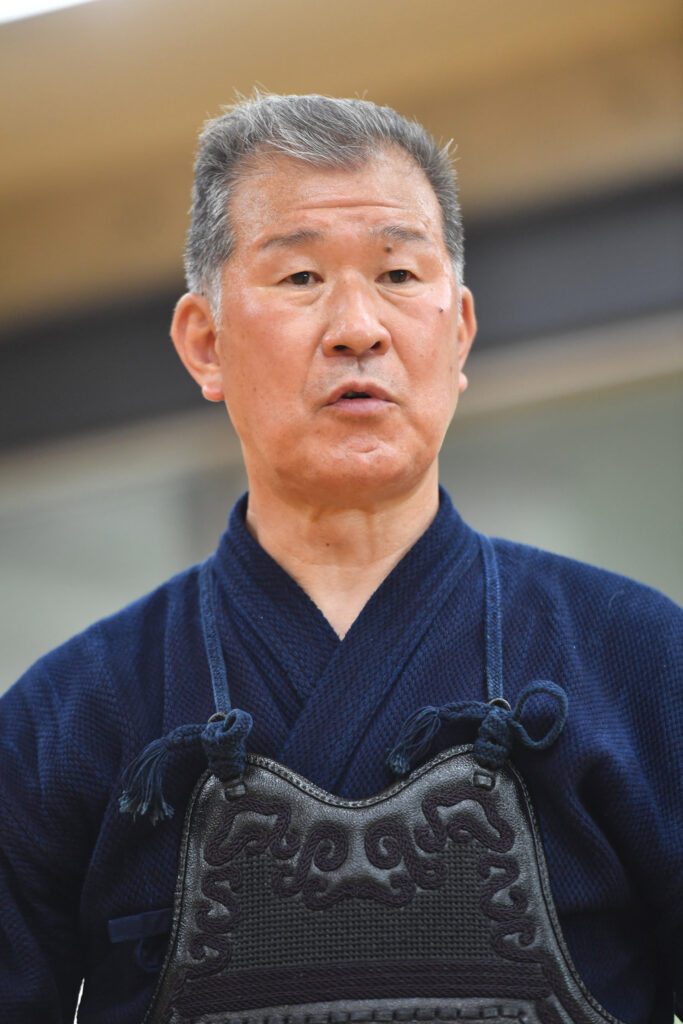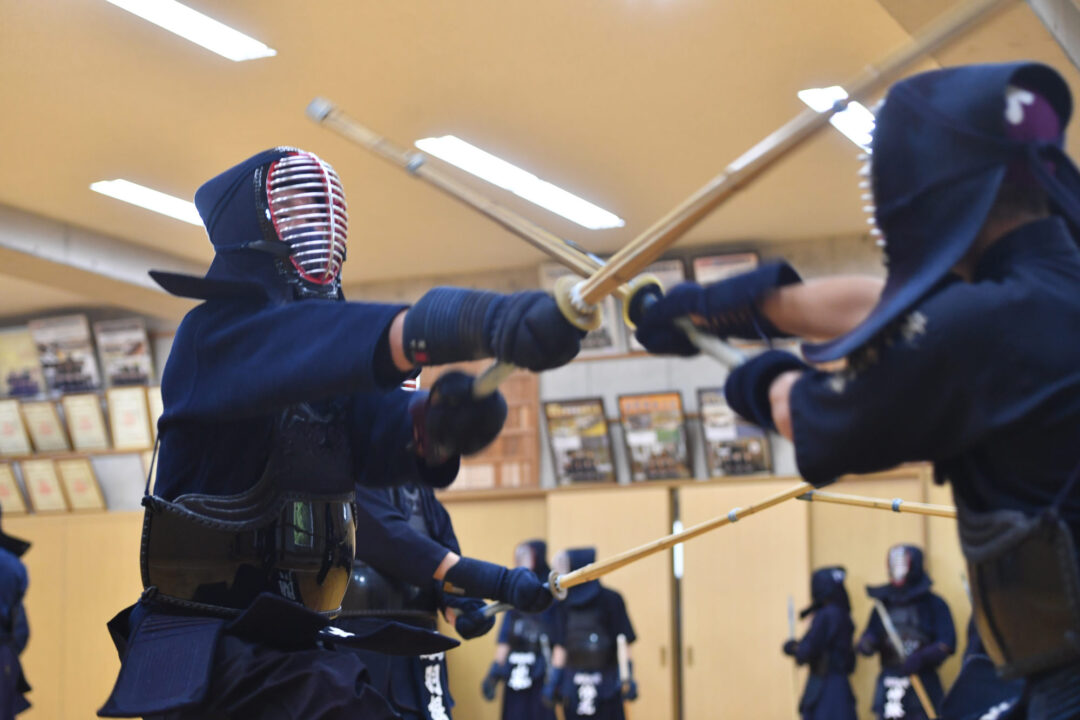2021.8 KENDOJIDAI
Planning:Teraoka Tomoyuki
Photography: Nishiguchi Kunihiko
Translation: Anne Zwart, Sato Mariko
After graduating from Kokushikan University, Sekikawa Tadaaki Sensei has been training younger students as a high school teacher for many years. Sekikawa Sensei shared with us his thoughts on Okori, the moment of movement in your opponent’s body and mind, and the importance of following through with your techniques: to be able to fully seize an opportunity you create, you must practice Kendo that follows through with strikes in your daily Keiko. Join his exploration of the key points to mastering this kind of Kendo.
Sekikawa Tadaaki, 8th Dan Kyoshi

Developing groundwork strength through repetition of basic training
I have been working at Takushoku University KORYO High School for almost 30 years now. In teaching high school students, I do not focus on teaching them all the details on how to move your opponent’s body and mind to create an opportunity (Okori) but rather I thoroughly instruct them to follow the basics of Kendo.
Once Japanese students graduate from high school, they will rarely receive extensive instruction unless they ask for it themselves. This means that the three years of Kendo instruction they get in high school will most likely be the foundation for the rest of their Kendo careers. Of course, it is important to seek victory in Kendo, but as a deeper goal, my fundamental desire is to teach Kendo that can build a prosperous future for the student.
Perfecting the basics thoroughly is vital to training students for victory in Kendo and in life. This is why our school conducts traditional Kendo practice, with drills like Suburi, Kirikaeshi, Kihon, Ji-geiko, and Kakari-geiko. We practice Kihon in particular and we try to practice for at least one hour every day, Kirikaeshi included.
However, we can never question ourselves enough whether what our bodies are doing during practice like this is faithful to the Kendo basics. If you do not have a correct Kamae and a firm grip on the Shinai, you will not be able to learn correct Kendo no matter how many hours you spend in basic practice. However, if you have these very basics of Kendo in place, I believe that even traditional training will be enough to build up proper strength and technique.
There are certain techniques that you should not use even if you know you they will land
An important aspect to Okori is synchronizing with the opponent in order to capture an opportunity. The reason why I don’t say much about Okori specifically to high school students is because I think it is very difficult for them to fall in sync with their opponents. Concepts like controlled breathing and energy synchronization(合気, aiki) are core to “Okori,” but I have found they are quite difficult for high school students to understand; instead, I explain Okori as understanding timing.
When I was in my early 40s, Yano Hiroshi, my teacher at Kokushikan University, told me, “You intentionally show your opponent an opening. The opponent sees this and strikes. You strike in response to their strike; that is what makes this interaction exciting.” I didn’t understand what he meant at the time, but now I understand the depth of those words. You have to get into aiki with the opponent, read the opponent’s thoughts as you are in mutual Seme, and strike at his or her Debana when they show an intention to strike. During this process, rather than waiting for an opportunity, you create it yourself by taking the initiative and putting pressure on the opponent; stirring their body and mind like this is the process of Okori. Since learning this lesson from Yano, I have tried to apply this knowledge from time to time when I stand as Motodachi.
Another lesson from Yano sensei that has stuck with me is this:
“Even if you know that you will hit the target if you strike now, there are certain techniques that you should not use”.
I think this lesson shows the difference between hitting (当てる, ateru) and following through with a strike/seeing a strike through to the end (打ち切る, uchikiru.)
Before I started working at Takushoku University KORYO High School, I taught at Kokushikan High School for nine years, where I had the privilege of practicing with Yano Sensei two or three times a week. In training with Yano Sensei, I must always give it my all; standing up to strict Keiko while enduring Yano Sensei’s severe Seme, I would put everything I had in me into a strike if I felt that I saw an opportunity. Of course, Yano Sensei made short work of my attacks with his excellent counterattacks, and I was never able to strike what I was aiming for, but needless to say, this repetition led me to build up my groundwork.
The rest of this article is only available for Kendo Jidai International subscribers!


